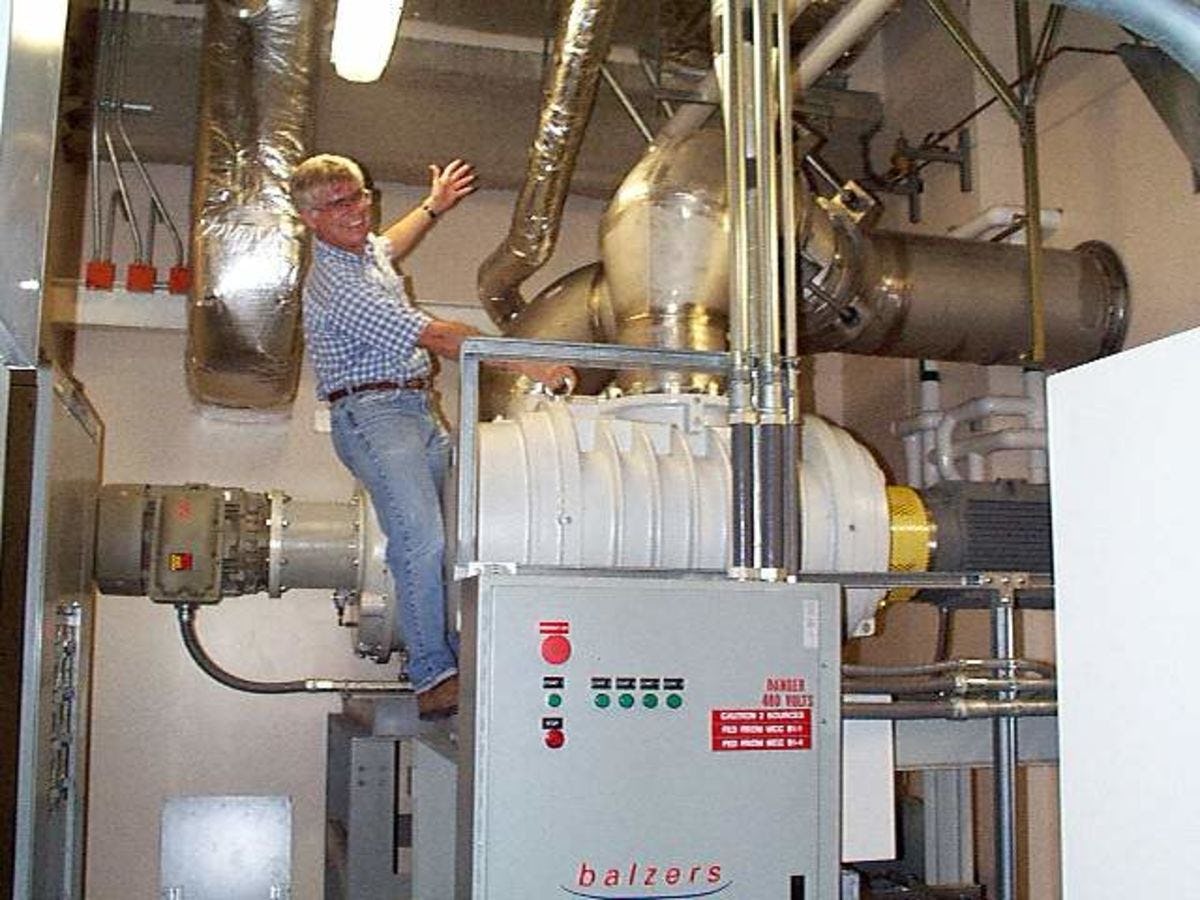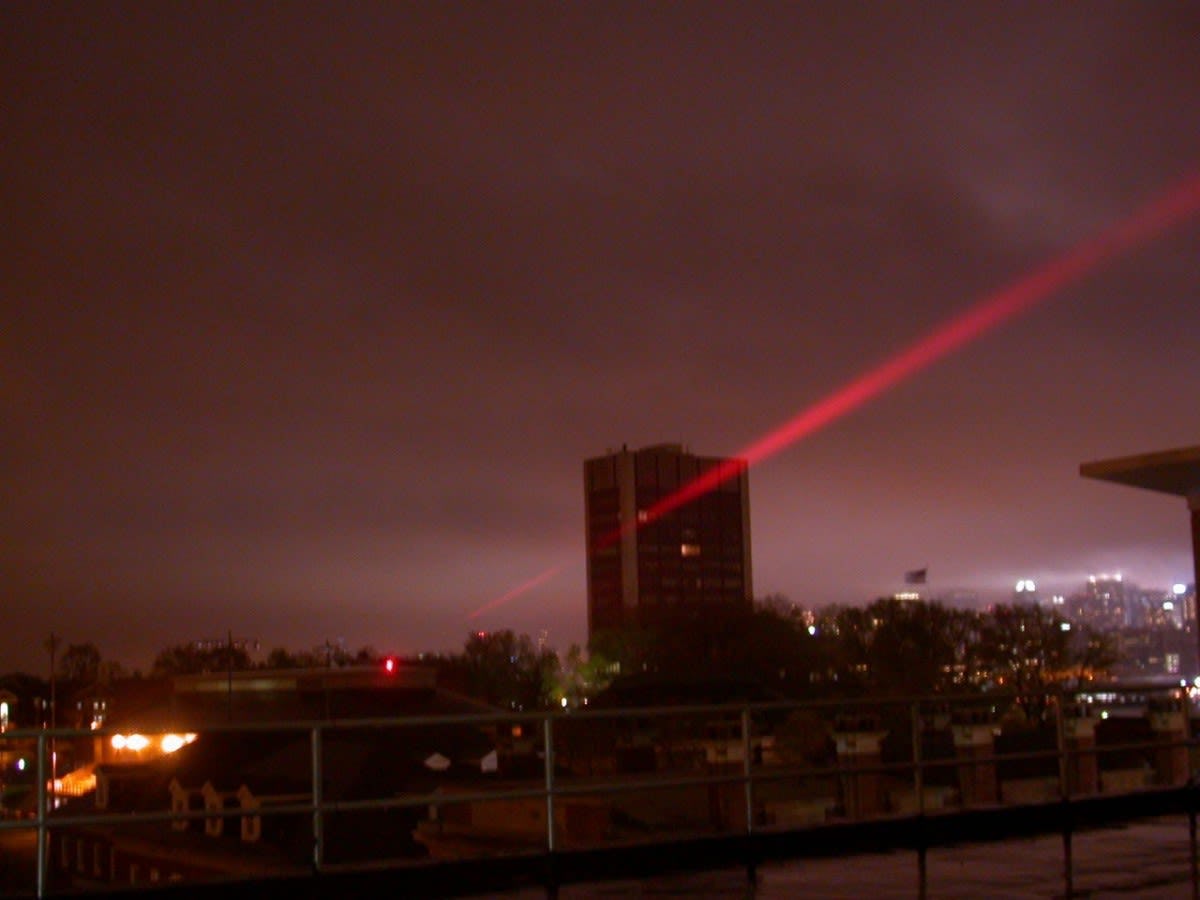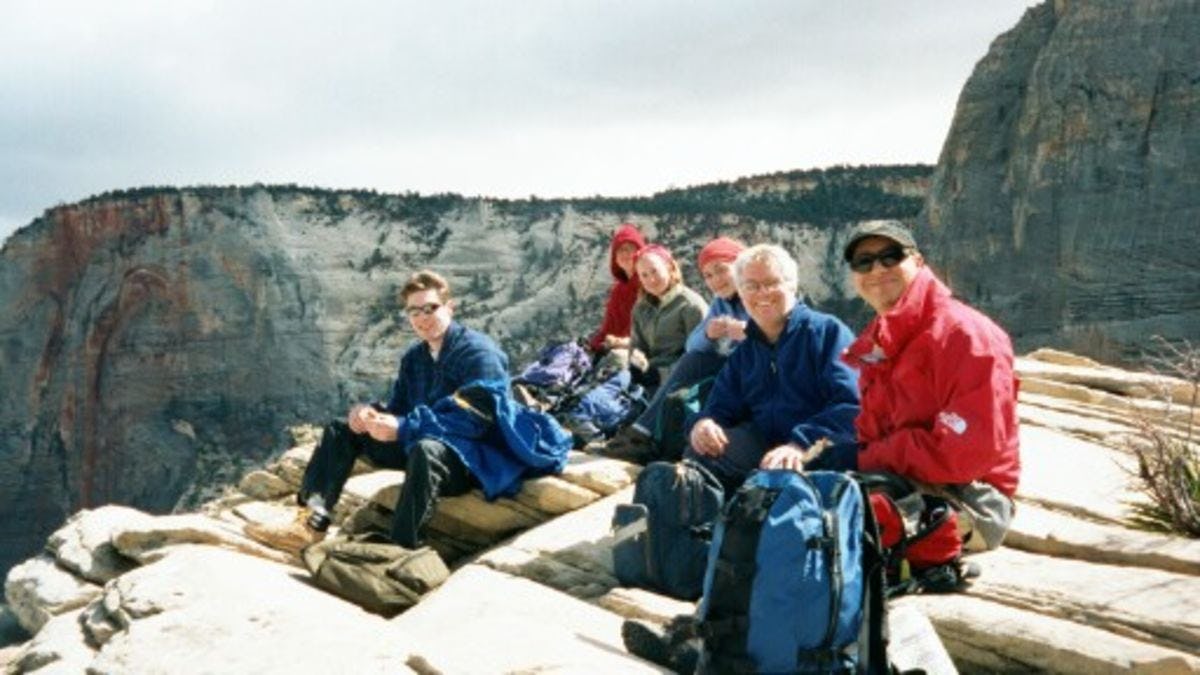Stevens Physics Professor’s Laser-Focus Advances Research—and Future Researchers
Ed Whittaker has built his illustrious career out of making things clear, from actual subatomic particles to abstract physics theories
As a child, Ed Whittaker aspired to become an astronaut. He has collaborated with tech giants IBM and Bell Labs. For nearly 40 years at Stevens Institute of Technology, his roles have spanned physics professor, researcher, and mentor both to students and to the Ducks men’s volleyball team.
Whittaker’s pioneering laser studies have informed and improved lives in diverse areas ranging from semiconductors to self-driving cars to landmine discovery. He edits the journal of the optics industry’s leading professional society, where he has been named a Fellow. His research into using the light from lasers to investigate the universe’s smallest particles supported Nobel Prize-winning breakthroughs.
But the thing that most excites Whittaker is helping Stevens students see the light in their own journeys.
Turning space age dreams into space age discoveries
“I’m a child of the ’60s, from the prime era of the excitement around the Space Race, and that really caught my attention,” he recalled. “Somehow, I went from thinking I should be an astronaut to realizing that the ultimate science behind what was going on was physics. A lot of money was being spent on physics, and it was relatively easy to get financial support as a physics student. Although almost everyone in my Indiana high school went to Purdue or Indiana University, I had to be eccentric and do something different! My godfather was a bursar at Worcester Polytechnic Institute in Massachusetts, so I applied there, and was grateful to be accepted and earn enough scholarships to be able to afford to attend.”
After earning his B.S. in physics, Whittaker went to Columbia University, where he earned master’s degrees in physics and philosophy, as well as his Ph.D. in physics. He then crossed to the opposite coast to complete his post-doctoral work at the IBM Almaden Research Center in San Jose, California, before coming to Stevens in 1984.
“At IBM, my postdoctoral advisor, Gary Bjorklund, had invented frequency-modulation spectroscopy, a technique that uses a laser to detect molecules and atoms in gas, which closely aligned with and helped refine my interest in using lasers to detect small amounts of matter,” he said. “I conducted basic research to figure out how lasers absorb light, how to make them more sensitive, and how to use those learnings to solve practical problems. I continued the work at Stevens, and my graduate student, Steve Sun, and I were granted a couple of patents out of that process of using lasers to process semiconductors. The work has a lot of interesting applications.”
Interesting indeed.
Some of Whittaker’s research at IBM was later used by W.E. Moerner, an IBM colleague and now a Stanford chemist, to help develop microscopy techniques that allow scientists to accurately envision individual molecular mechanisms inside living cells. This innovative approach, which supports the very study of life itself, earned a Nobel Prize in 2014.
After his postdoctoral work at IBM ended, Whittaker joined Stevens Institute of Technology, in part due to its recently renewed focus on encouraging faculty members to be active in research. In addition to being a professor, he was also responsible for pursuing research funding and writing grant proposals.
In the 1990s, Whittaker’s laser-based technique collaborations with colleagues at Princeton University, Rutgers University, and the David Sarnoff Research Lab in Princeton, New Jersey, promoted the development of plasma etching, a component of processing the semiconductors that drives laptops, cell phones, and other technologies we all rely upon today.
“Making semiconductors is similar to photography,” he explained. “Just as film has a special coating on it that reacts to the presence of light, computer chips are wafer-thin pieces of silicon crystals with a photo-resist coating that is repeatedly etched and recoated to create particular patterns that become tiny electronic circuits. Over the past 40 years, people have been figuring out how to make those chips smaller and smaller, with more and more circuitry on each piece. Today, there can be tens of billions of circuits on every chip, and that’s what our work in plasma etching supported.”
By the early 2000s, Whittaker’s plasma etching efforts had caught the eye of Bell Labs research scientist Federico Capasso, who invited him to collaborate on the detection of molecules with a quantum-cascade semiconductor laser. That led to further collaborations with the Pacific Northwest National Laboratory.
Over the years, he has also pursued his interests in transient optical spectroscopy and squeezed quantum states for detecting molecules and motion in single cells in the human body or in galaxies billions of light years away, free-space optical communications for the internet and other wireless data transmission, and laser vibrometry for land-mine detection and other applications.
“The idea of free-space optical communications is the basis for lidar, which is light-based radar, and is being used for self-driving cars,” he said. “If that ever happens, it will be because of free-space optical communications—being able to shine a laser attached to the car in a 360-degree pattern, so that light bounces back and indicates the presence of a person or another car. The light going through ‘free space’ creates a picture of what the car is experiencing. The lasers would likely be something similar to the ones we used.”
Cultivating “productive scientists…who have that touch of humanity and kindness”
While all of that groundbreaking research still fascinates Whittaker, his passion now is more closely tied to teaching and mentoring.
“Even as a Ph.D. student, I enjoyed working with other students,” he recalled. “One’s career has different arcs, and it’s frankly hard to sustain research, but I have always been interested in teaching and helping students go from being freshmen to getting their Ph.D.s and going out in the world and maximizing their potential. As a bonus, every time I teach anything, I find myself learning something about it. The brain is a fascinating device, and when you keep pushing it, it continues to grow.”
In the fall of 2020, an unexpected student in one of his quantum mechanics courses helped Whittaker grow his brain even more.
“John Horgan, Director of the Center for Science Writings in Stevens’ College of Arts & Letters, asked if he could sit in on our lectures so he could learn more about this area he often writes about,” Whittaker said. “He came to every Zoom lecture, and it sharpened me up to think about new ways to describe things like Heisenberg’s uncertainty principle. The goal is to have students not just understand the words, but truly internalize the concepts and let the ideas live in their brains in such a way that they can advance the science and the knowledge. It’s fun to get students to start to grapple with those things. They can’t just listen. They have to do the work.”
Even doing the work became a challenge during the COVID-19 pandemic, as remote learning prevented participation in traditional labs on the Stevens campus.
“You can’t simulate learning how to build a computer-controlled experiment—you have to do it,” said Whittaker, who solved the problem by shipping an inexpensive yet powerful Arduino electronics kit to every student. “We were spread across the country, but every week we were still able to work together on Zoom as if we were in the lab. It ended up being a marvelous process, and the students appreciated it. One of my students had COVID and was having difficulties with the lab, and I was able to help him think through what to do next. That’s what my job is about: working with students, building relationships, and being there for them. My life as a faculty member is very much about helping my students become productive scientists and engineers and working professionals who have that touch of humanity and kindness we should all have.”
Whittaker has taken that mentoring approach out of the classroom as well by founding and leading a chapter of the Sigma Pi Sigma physics honor society at Stevens.
Taking the bigger view of small things
Although he’s not directly involved in research anymore, Whittaker keeps his finger on the pulse of the industry he loves by serving as deputy editor for Optics Letters, the journal of the Optical Society (OSA), the leading professional society in optics and photonics. He was also recognized in 2018 as an OSA Fellow, honoring the outstanding results he has achieved.
“I’ve been an OSA member since I was a grad student, in 2005 I was appointed topical editor, and a couple of years ago I became deputy editor,” he said. “Every morning, I go on the website and look at the queue of papers waiting, and assign review to the topical editor best suited for the research.”
While he has written at least his own fair share of academic papers, what he most appreciates about his nearly half-century of research is the collaboration it took to attain those results, and the way that his research continues to support additional collaborations and innovations.
“The most rewarding aspect of scientific research is the collaborative human effort involved in solving problems,” he said. “My research has brought me into contact with people from all around the world, from different cultures with different ways of thinking and doing things. As academics, we are often measured by our citations—how many people read our papers. I have a modest 3,000 citations so far, and it’s gratifying to know that more and more people are putting together things I helped discover to try to make the world a better place.”
Learn more about the Department of Physics at Stevens:





